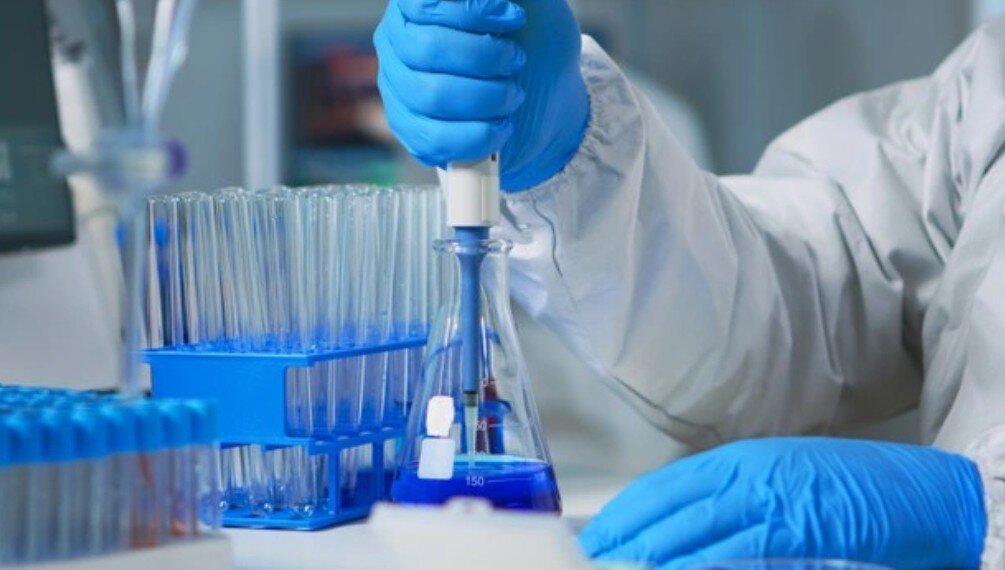Microbiological analysis helps ensure quality and safety from production, food to delivery. Hence the importance of maintaining precision and rigorous evidence on microbiological results to meet the requirements and risk analysis. In addition, it is protecting the health and life of consumers.
Multiple advances in technology force the evolution of these tests to respond at the same speed to be in line with industry strategies.
On average, the quality control laboratory’s microbiological analyses are 18% for pathogen analyzes and 82% for quality indicators.
This European Standard specifies test methods and minimum requirements for disinfectants and antiviral activity to form physically stable and homogeneous formulations when diluted with hard water or ready-to-use products. It is. e, products that dilute with water at the time of application. The product tests at a concentration of 80% (97%, modified for exceptional cases). This is because some dilution always occurs when adding test organisms and interfering with substances.
This European Standard applies to products used in the medical field in hygienic handwashing, hygienic hand washing, disinfection of instruments by immersion, disinfection by rubbing, spraying, or other means like flooding.
TS EN 14476 Chemical and antiseptic disinfectants
EN 14476 Test, a European standard, describes the requirements for the virus elimination suspension used in medicine, between chemical disinfectants and antiseptics, and test methods.
TS EN 14476 Test Chemical and antiseptic disinfectants
TS EN 14476 Test Chemical and antiseptic disinfectants – Quantitative virus suspension test for chemical and antiseptic disinfectants used in medicine – Method and requirements test (phase 2, step 1)
The concept of a biocide describes a broad-spectrum chemical substance that neutralizes microorganisms. Biocides vary based on antimicrobial activity and make use of claims that refer to agents that kill the target organism.
Sterilization is a physical or chemical process that destroys or eliminates all microbial life, including spores. Systems of antibacterial action of antiseptics and disinfectants used for this purpose are known in detail today.
The interaction of chemical and antiseptic disinfectants with the cell surface and subsequent penetration into the cell is different because the nature and composition of the shell vary from one type of cell to another.
Disinfectants do not necessarily kill all organisms but rather reduce them to a level that does not harm the health or quality of perishable products.
Disinfectants are also applied to materials such as equipment, devices, and surfaces in medicine to control and prevent infections.
On the other hand, antiseptics are a type of disinfectant that, when applied to exposed body surfaces or tissues, prevents or prevents microorganisms in living tissues without harmful effects.
EN 14476 Test is a quantitative suspension test to evaluate virus-killing activity in the medical field. Products tested against this European test standard are effective against all enveloped viruses, including coronavirus and SAR-CoV2.
How are the tests run?
The virus-killing effect test consists of three concentrations of test product solution and a contact time of 5 minutes. The virus is exposed to a disinfectant on a 24-well plate, neutralized, diluted stepwise, and titrated on a 96-well tissue culture plate to determine a tissue culture infection level of 50 (TCID50) for the surviving virus.
Cytotoxicity control: The solution of the test product measures the effect on the host cells used to spread the virus.
Assay sensitivity
• Interference control: Check the effect of cells after treatment with the test product solution to ensure that the cells show susceptibility to viral infection. This compares to cells that the test product has not processed.
• VS1 disinfectant suppression control: After adding the virus to the highest concentration test product solution, the mixture is immediately removed and neutralized. Next, determine the neutralized virus titer and evaluate the effectiveness of neutralization.
VS2 Disinfectant Suppression Control-Internal Control to Add Virus to Neutralized Test Product Solution to Evaluate Neutralization Efficiency
Procedure
Virus recovery control: Determines the virus titer in contact with sterile distilled water at t = 0, t = 5, and t = 15. The virus titers after 5 minutes in comparison with the recovery of the virus treated with the disinfectant—logarithmic reduction of virus titer. Compare the virus titer at 15 minutes with the reference virus inactivated control.
Reference virus inactivation control: The virus is exposed to 0.7% w / v formaldehyde, and virus recovery determined by TCID50 after 5 and 15 minutes.
Evaluate that the test virus retains reproducible biocide resistance. In addition, the cytotoxicity of neutralized formaldehyde determines the sensitivity of the assay.
Products tested according to EN 14476:
• Single Zappy Isopropyl Alcohol Wipe / Bottle
• Zappy Ultimate disinfectant wipes individual/resealable
• 70% Isopropyl Alcohol Wipe, Single / Bottle
• Resealable Alcohol Container / Wipe
• Multi-Surface Resealable Wipe / Container
The UNE-EN14476 test for general virus-killing activity requires that the trial be performed using three strains of poliovirus type 1, adenovirus type 5, and murine norovirus.
This is because if these viruses are more resistant to the action of disinfectants and the disinfectants are active against them, they are effective against other untested viruses. When testing with other species/strains (such as hepatitis B virus in this case), it can be found out that the test is active against this species/strain but does not meet the criteria requirements.
It is considered to be a general virus-killing agent. For hepatitis B virus (HBV), there are no cell lines to replicate in vitro.
However, surrogate viruses with similar biophysical properties and genomic structure assess the viral killing effect of chemical disinfectants in quantitative suspension tests. The recommended surrogate virus is porcine herpesvirus type 1 (pseudo-rabies), replicating in vitro in cell culture.
But, given the sensitivity and difficulty of acquiring these cells, in our laboratory and some publications (among them; WHO Technical Report, Series No. 924, 2004), herpesvirus type 1 (Pseudo-rabies) is used. .. The method used is the same as that shown in the EN14476 guide.
In addition, the new version of this test introduces the possibility of using vaccinia virus when testing enveloped virus disinfectants for hygienic hand washing and treating hands with hygienic rubbing.
Since hepatitis B virus (HBV) is an enveloped virus, the disinfectant against hepatitis B virus using porcine herpesvirus type 1 (pseudorabies) or vaccinia virus when testing the disinfectant. To test. For hygienic hand washing or hand treatment with hygienic rubbing.
The test conditions
The test conditions are as follows.
1) Hygienic treatment of hand-rubbing and hygienic hand-washing when limited spectrum is the required-covered virus-; test temperature 20 ° C; contact time of 30-120 seconds. Clean for hygienic handwashing, dirty for hand washing.
2) Equipment disinfection test temperature 20 ℃; Contact time not exceeding 60 minutes; Clean or dirty condition;
3) Surface disinfection, test temperature of 4-30 ° C. Up to 5 minutes for surfaces close to the patient, up to 60 minutes for other surfaces *; clean or dirty.
The product should be tested in at least three concentrations; including one in the active range and one in the inactive range (the last two concentrations correspond to positive and negative controls, respectively, so the test performs. Selected by the lab ..). To consider a product virus-killing, it must confirm that 4 logs reduce its infectivity.







